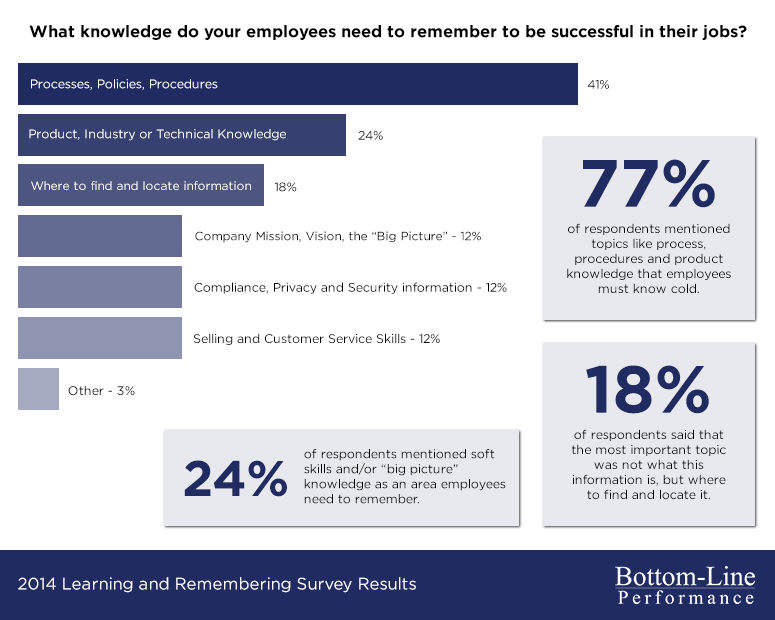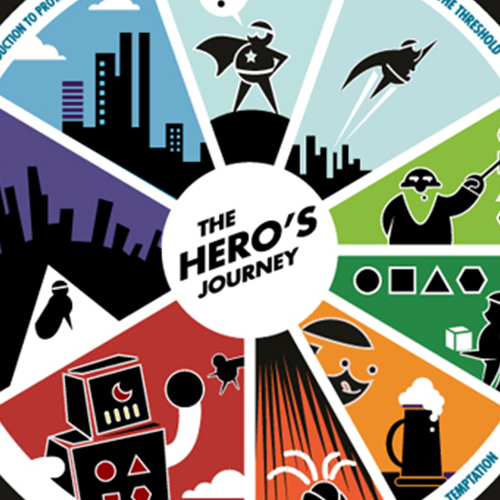How Games & Gamification Can Help Align Processes & Procedures

Some people cringe when they hear the words “process” or “procedure.” Others appreciate and value them. Either way, processes and procedures are essential to a successful organization. That’s why so much of the training organizations deliver is supposed to help align employees with a process or teach them a procedure.
In an article on process training I wrote for our BLP Lessons on Learning blog, I shared that 41% of respondents to our one of our previous Learning and Remembering Surveys listed policies, process, and procedures as the primary type of knowledge employees must know on the job. This was the most mentioned training topic!

The challenges L&D professionals listed in their survey responses likely sound familiar to anyone involved with process training. Organizations struggle because they have too many processes, too much training for employees to consume, lack of buy-in with key middle managers and lack of real motivation to change habits in the first place. That last reason, getting employees to buy into the “why”, is especially important. It’s not so much a matter of learning as it is an issue with motivation.
Let’s assume that your employees are human beings who are intelligent and capable of following basic steps. They could learn the process and follow it if they wanted to, but they have not found a compelling reason that motivates them to do so. — excerpt from “Is Your Process Training “Nice to Know” or “Need to Know”?
Many of our customers, Johnson & Johnson and Ally Financial to name a few, use Knowledge Guru games to teach a specific process that learners need to follow. We also create many custom learning solutions that include a gaming component where the goal is process alignment. While games or gamified solutions are sometimes the answer, they can only do so much when you have a process problem instead of a learning problem.
How can games and gamification help align processes and procedures?
I mentioned above that games may not be the answer if you really have a “process” problem. We sometimes conduct a training needs analysis with clients to discover if this is the case. If the real issue is that employees either A) do not know the process or B) are not motivated to follow the process, games and/or gamification can help.
Serious games and gamification can…
1. Help employees remember how to follow the process.
We always emphasize the importance of aligning game mechanics to instructional design principles. Our Knowledge Guru platform utilizes spaced learning, repetition and feedback loops, for example. The “Quest” game type includes a Bonus Gate where questions that players missed earlier in the game are shown again. When serious games are aligned with the science of remembering, learners are more likely to retain key facts long after they play.
2. Make Middle Managers Happy… or at Least Happier.
In environments such as call centers or factory floors, managers do not want their employees to take large amounts of time away from their work. Training that is distracting or disruptive to the flow of work will often not be supported. Many of the benefits of serious games and gamification can be realized in just minutes a day. Knowledge Guru “Quest” allows administrators to set how frequently players can play and also allows them to “lock” worlds for set lengths of time. An email reminder can be enabled to invite them back. This way, employees only play in small chunks.
3. Motivate employees to learn about the process.
Most learning professionals first turn to games or gamification because they hope to engage or motivate their learners. Points, badges and leaderboards can help with this… but they are not often enough to motivate by themselves. Your solution might also incorporate story, avatars, minigames and aesthetics to create an experience employees will find interesting.
4. Help build context and relevance.
One of the best way to increase adoption of a process is to show the why. Any game-based solution should make liberal use of relevant scenarios that ask learners to correctly follow and apply the process. Custom-built games can go even further with characters, stories and gameplay that mirrors the workplace. Watch out for solutions that present scenarios “at random” or via an algorithm! There is value in controlling the order in which content is seen so that learners can build on past knowledge from previous sections of the game.





